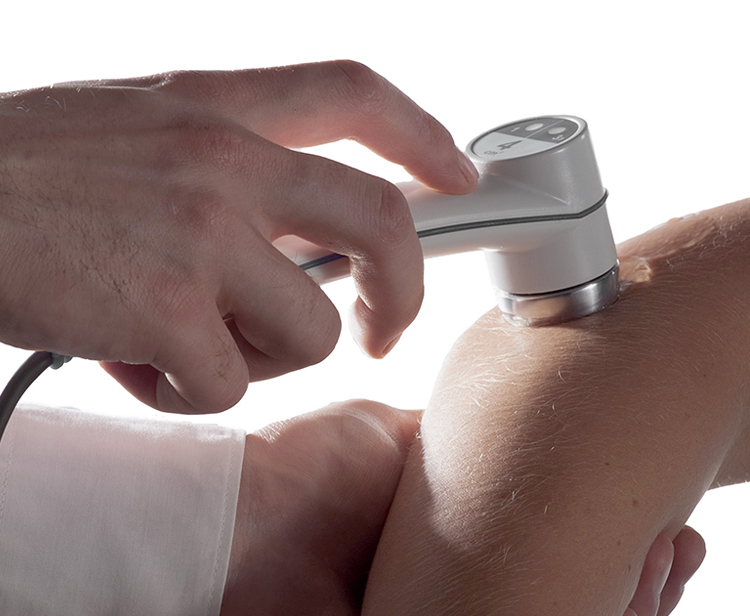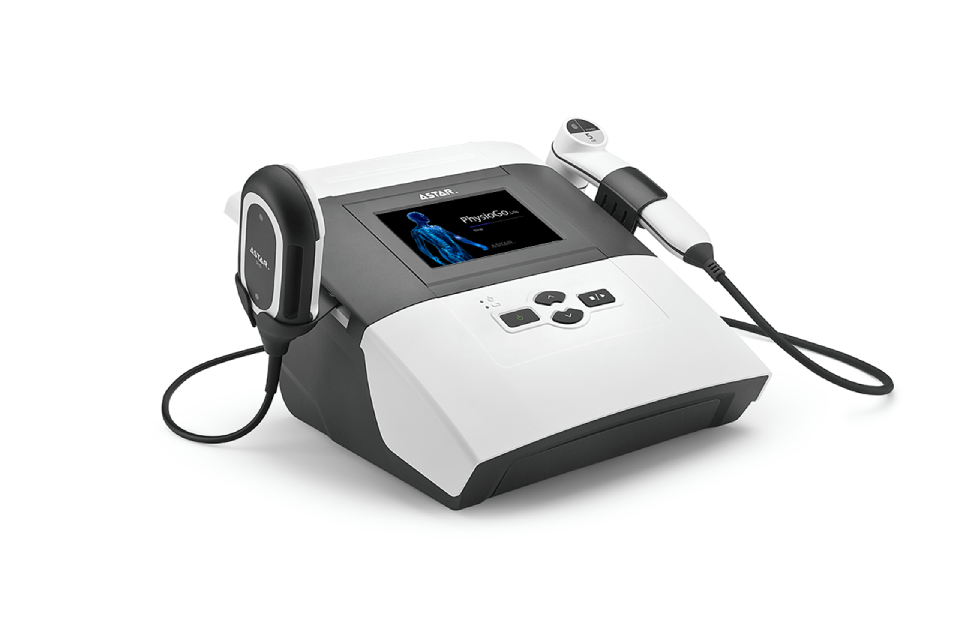Ultrasounds are sound waves with a frequency of 20 kHz – 1 GHz. This frequency is too high to be heard by the human ear. A human being is able to hear sounds in the frequency range 16 – 20,000 Hz. However, higher frequency sound waves are audible for certain types of animals, such as bats, dolphins or dogs. Ultrasound therapy uses mainly sound waves with a frequency of 1 MHz and 3 MHz.
The positive effects of using ultrasound in therapy are appreciated by specialists in physical therapy around the world.
What is ultrasound therapy?
Ultrasound acts on tissues mechanically ( i.e. through micromassage), thermally and physicochemically. Ultrasound therapy treatments are particularly valued for positive therapeutic effects in the form of analgesic and regenerative effects.
The biological effect of ultrasounds is the resultant of thermal, mechanical and physicochemical effects and includes:
- agitation of fibroblast activity,
- stimulation of collagen synthesis,
- acceleration of DNA synthesis,
- vasodilation and hyperemia of organs,
- agitation of cellular oxidation processes,
- change of cell membrane functions,
- change of nerve fibers conduction rates.

How does ultrasound therapy help patients?
Ultrasounds, due to their biological effects in tissues, are used to:
- treat inflammation,
- reduce pain and swelling,
- increase the flexibility of connective tissue,
- reduce muscle tension,
- accelerate tissue healing, including bone fusion,
- reconstruct and improve circulation.
A low intensity ultrasounds therapy (LIPUS) is a special type of ultrasonic wave incorporated in the device. Generally, they are emitted in pulsed mode with average power density up to 0.1 W/cm2 (100mW/cm2), low frequency (most often 1.5 MHz), short duty cycles (20%), pulse repetition frequency around 1kHz. The low intensity ultrasounds do not cause thermal and destructive effects, they accelerate the healing of open wounds, as well as tendons, nerves and bones.
The ultrasounds in LIPUS mode are used to:
- stimulate bone fusion, tendons and nerve repair,
- support the healing processes in acute and subacute inflammation.

What diseases does ultrasound therapy treat?
Indications for the use of ultrasound therapy are the following diseases and conditions:
- analgesic effect e.g. in the course of degenerative diseases of the spine and peripheral joints, sciatic and femoral neuralgias, painful shoulder syndrome, muscle pains (myalgia)
- chronic inflammations incl. degenerative diseases of the spine and peripheral joints, rheumatoid arthritis
- contractures of connective tissue (joint capsule, tendons, muscles, skin surface)
- normalization/acceleration of tissues healing and regeneration processes – muscles, tendons, ligaments, wounds e.g. ulcerations, bedsores
- improvement of circulation
- muscles strains and calcification
- tendons strains and calcification (e.g. tennis elbow, golfer’s elbow)
- neuropathy, e.g. compression of the median nerve (only in a non-thermal dose)
- sympathetic system disorders such as reflex sympathetic dystrophy
- medicine application (phonophoresis)
- combined therapy
Indications for LIPUS therapy
- fractures (of tibia, fibula, carpal bones)
- delayed bone union
- stress fractures
- degeneration disease and intervertebral disc herniation

This website uses technical and functional cookies or internet analytical cookies, with your consent marketing cookies. You can read more about this in the Cookies Policy and the Information Clause. By accessing the website, you agree to them according to your browser settings. You can change them at any time, and if you do not do so, browsing the website will use these files.

